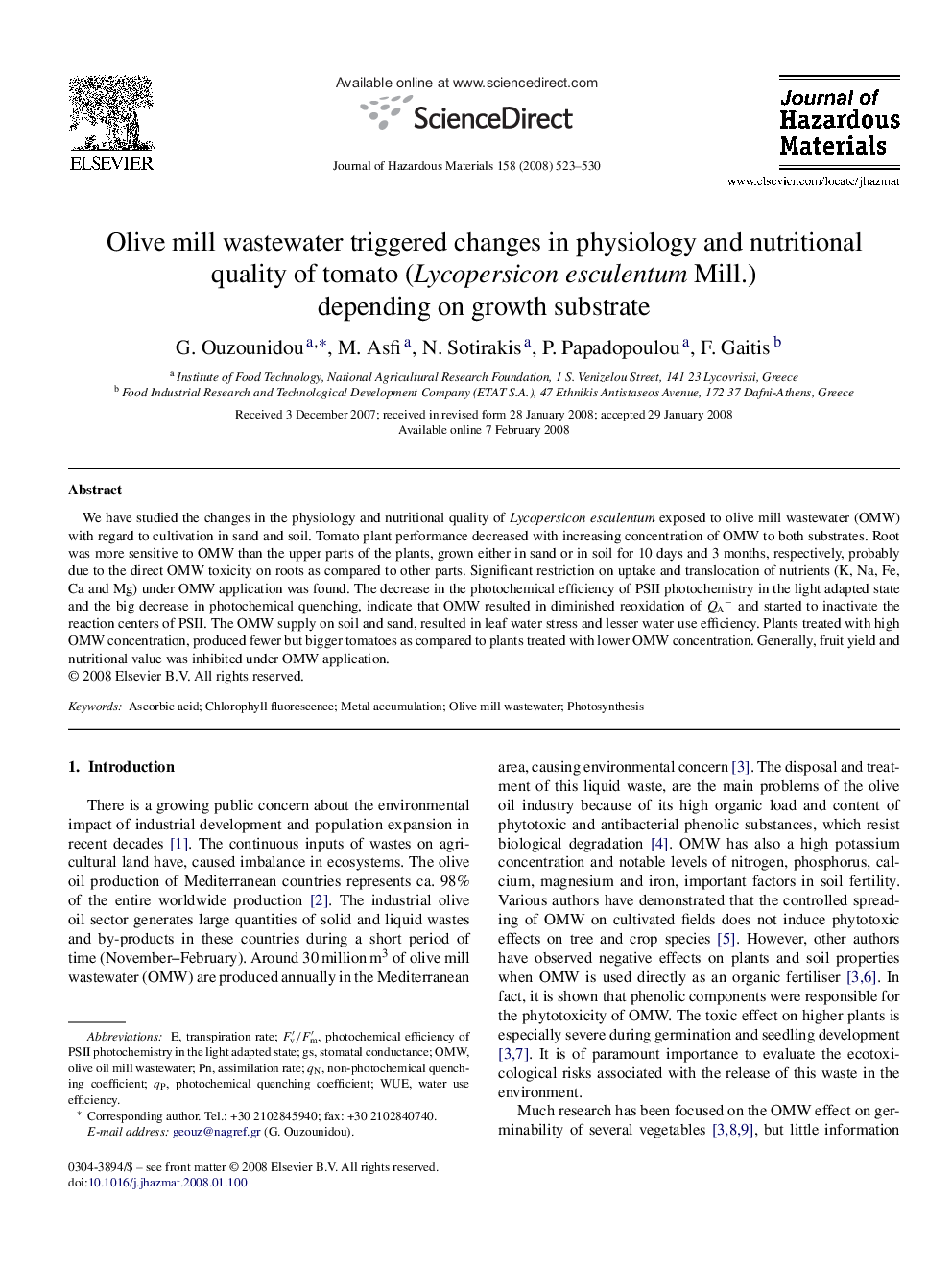| کد مقاله | کد نشریه | سال انتشار | مقاله انگلیسی | نسخه تمام متن |
|---|---|---|---|---|
| 583319 | 1453170 | 2008 | 8 صفحه PDF | دانلود رایگان |
عنوان انگلیسی مقاله ISI
Olive mill wastewater triggered changes in physiology and nutritional quality of tomato (Lycopersicon esculentum Mill.) depending on growth substrate
دانلود مقاله + سفارش ترجمه
دانلود مقاله ISI انگلیسی
رایگان برای ایرانیان
کلمات کلیدی
WUEOMWF′v/F′mAscorbic acid - آسکوربیک اسیدWater use efficiency - بهره وری استفاده از آبMetal accumulation - تجمع فلزnon-photochemical quenching coefficient - ضریب خنک سازی غیر فتوشیمیاییphotochemical quenching coefficient - ضریب خنک کننده فتوشیمیاییOlive oil mill wastewater - فاضلاب آسیاب زیتونOlive mill wastewater - فاضلاب زیتون آسیاب شدهPhotosynthesis - فتوسنتزChlorophyll fluorescence - فلورسانس کلروفیلAssimilation rate - میزان همبستگیtranspiration rate - نرخ تنفسStomatal conductance - هدایت گرمایشی
موضوعات مرتبط
مهندسی و علوم پایه
مهندسی شیمی
بهداشت و امنیت شیمی
پیش نمایش صفحه اول مقاله

چکیده انگلیسی
We have studied the changes in the physiology and nutritional quality of Lycopersicon esculentum exposed to olive mill wastewater (OMW) with regard to cultivation in sand and soil. Tomato plant performance decreased with increasing concentration of OMW to both substrates. Root was more sensitive to OMW than the upper parts of the plants, grown either in sand or in soil for 10 days and 3 months, respectively, probably due to the direct OMW toxicity on roots as compared to other parts. Significant restriction on uptake and translocation of nutrients (K, Na, Fe, Ca and Mg) under OMW application was found. The decrease in the photochemical efficiency of PSII photochemistry in the light adapted state and the big decrease in photochemical quenching, indicate that OMW resulted in diminished reoxidation of QAâ and started to inactivate the reaction centers of PSII. The OMW supply on soil and sand, resulted in leaf water stress and lesser water use efficiency. Plants treated with high OMW concentration, produced fewer but bigger tomatoes as compared to plants treated with lower OMW concentration. Generally, fruit yield and nutritional value was inhibited under OMW application.
ناشر
Database: Elsevier - ScienceDirect (ساینس دایرکت)
Journal: Journal of Hazardous Materials - Volume 158, Issues 2â3, 30 October 2008, Pages 523-530
Journal: Journal of Hazardous Materials - Volume 158, Issues 2â3, 30 October 2008, Pages 523-530
نویسندگان
G. Ouzounidou, M. Asfi, N. Sotirakis, P. Papadopoulou, F. Gaitis,